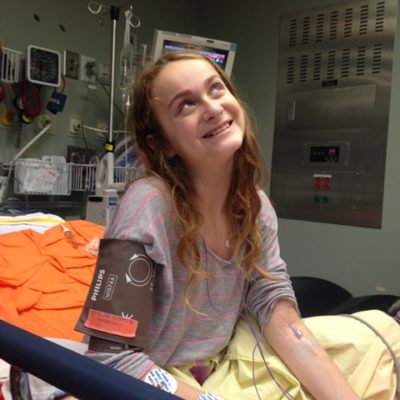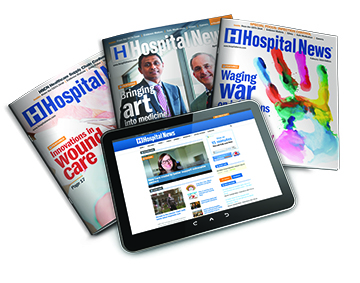They’re calling it ‘the stethoscope of the future’. A portable technology called #point-of-care #ultrasound is helping doctors at The Hospital for Sick Children (SickKids) provide better and more efficient bedside care in the emergency department, and it’s having a huge impact.
Point-of-care ultrasound is used in about 25 to 30 per cent of the cases coming through SickKids’ emergency department. “Since using ultrasound at the bedside, I find I’m using my stethoscope less. We’re identifying medical issues more efficiently and accurately which is essentially leading to better decision-making, better care for our patients, and even a reduction in ED wait times for some patients,” says Dr. Mark Tessaro, Staff Physician in Paediatric Emergency Medicine and Research Lead in the POCUS Program at SickKids.
Ultrasound is a safe and radiation-free medical device that uses sound waves to produce images of what’s going on inside the body. It was first used in obstetrics in the 1950s and since then its use has expanded to include a number of diagnostic and therapeutic applications.
The Paediatric Emergency Medicine point-of-care ultrasound program was launched at SickKids in 2011. The goal was to improve the care of injured and ill children through a new application of this reliable and well-established tool. SickKids is Canada’s only training centre for paediatric point-of-care ultrasound and in five years, 10 fellows have been trained and have subsequently brought their expertise and experience to other hospitals across the country and internationally.
The applications for point-of-care ultrasound in the ED are far reaching. It enables doctors to detect internal bleeding, cardiac, and/or intestinal problems, it can uncover foreign bodies, an abscess that needs to be drained, a twisted teste or ovary, and even retinal detachment in the eye, which is very challenging to identify in children. It also helps with procedures like inserting an airway tube, or delivering an anaesthetic injection (nerve block) for example.
“There is no doubt in my mind that point-of-care ultrasound has improved the care I provide my patients. Before I began using it, I would order more tests, which later proved to be unnecessary, and spend more time doing physical exams in efforts to figure out the root problem,” says Dr. Charisse Kwan, Staff Physician in Paediatric Emergency Medicine and Education Lead in the point-of-care ultrasound program at SickKids. “Point-of-care ultrasound does not replace the physical exams but in some ways gives us ‘magic fingers’ that enhance the physical exams and help to confirm diagnoses much faster than before.”

In mid-December, after several days of illness and an outpatient chest X-ray that suggested pneumonia, Hannah Diamond, 12, was rushed to SickKids’ emergency department when her fever spiked to 40 C, her lips suddenly turned blue, and she began shaking and shivering. Dr. Tessaro was working that evening, and within five minutes of Hannah’s arrival at SickKids’ emergency department, Dr. Tessaro told Hannah and her mom, Sari, that he’d like to do an ultrasound at the bedside to get a better picture of any potential complications that could have caused Hannah’s sudden distress. Almost immediately, Tessaro was able to rule out serious complications like fluid on the lungs, and he and the Diamond family had their answer – it was a straightforward bacterial pneumonia.
“Having a clear picture of what we were dealing with meant I didn’t need to order the usual chest X-ray, avoiding unnecessary radiation exposure for Hannah,” says Tessaro, who quickly prescribed Hannah IV antibiotics and acetaminophen.
Within 90 minutes, Hannah was back on her smartphone, texting friends about her adventure in the Emergency Department and posting photos and updates to Snapchat. About two hours later, she was discharged, and the next morning, Hannah woke up fever free for the first time in a week.
The emergency team has multiple examples of how the use of point-of-care ultrasound in the emergency department is improving care and has even led to quick detection of rare congenital diseases, heart conditions, and cancers that likely would have taken many emergency and specialist visits before a #diagnosis was uncovered.
“As ED doctors we have a responsibility to assess patients quickly and detect problems accurately, in all areas of the body. Point-of-care ultrasound is helping us do that better,” says Tessaro.
The goal is to have virtually all SickKids staff emergency medicine physicians fully trained to use point-of-care ultrasound. Currently five are fully trained.
Drs. Tessaro and Kwan are Assistant Professors in the Department of Paediatrics at the University of Toronto.




